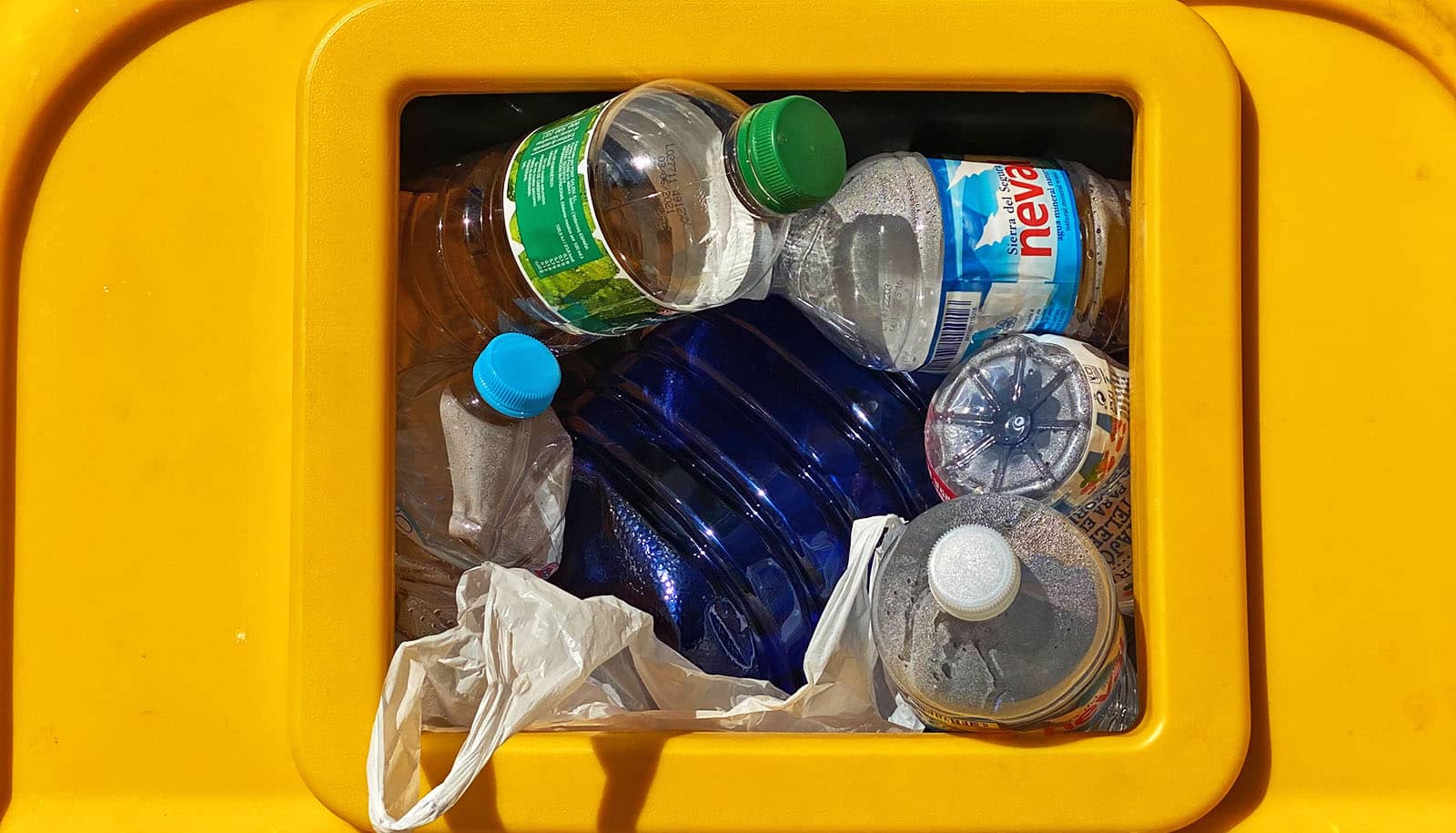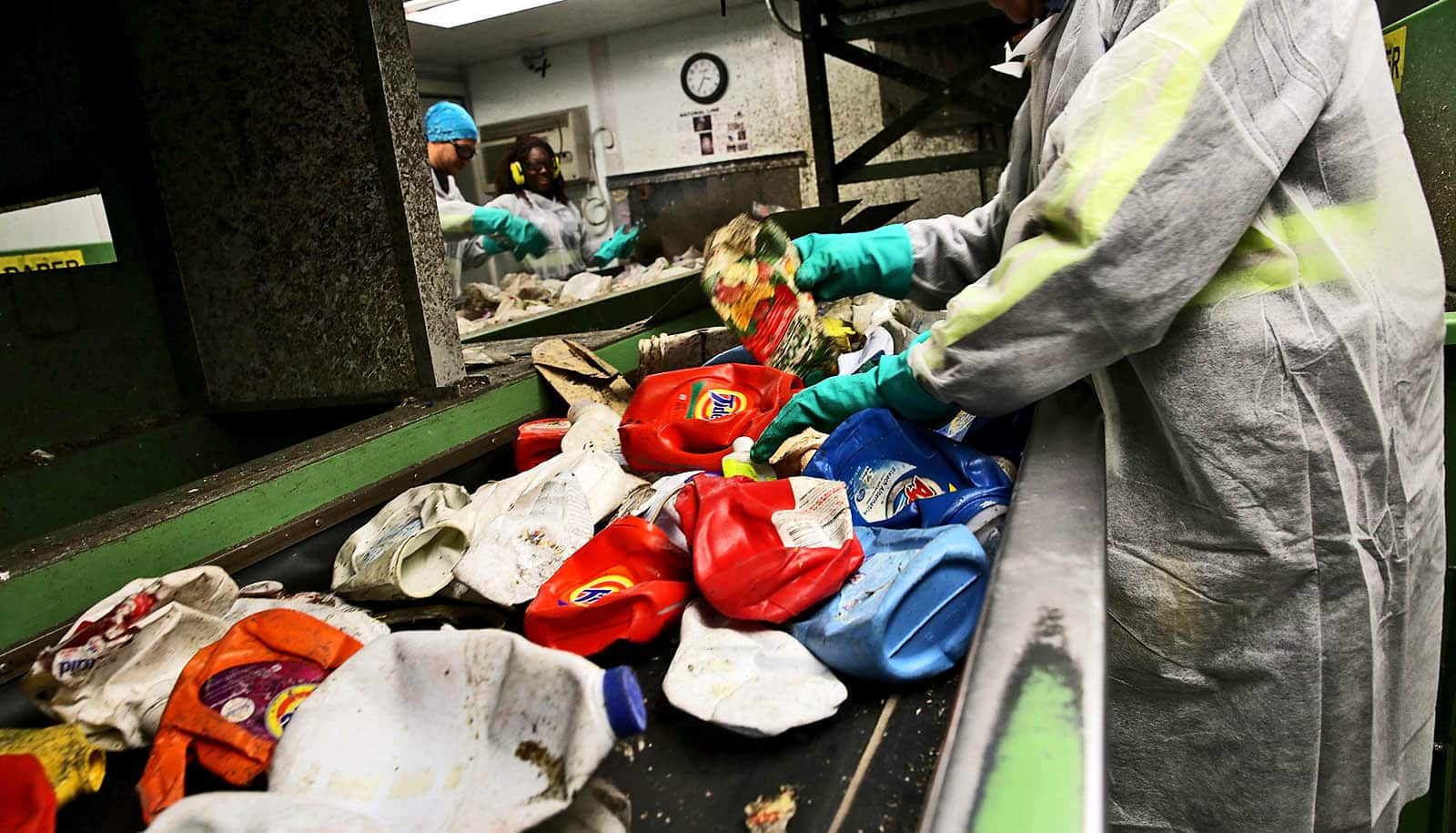Lots of recycling, combined with the use of CO2 from the air and biomass, could make a completely sustainable plastics industry a reality, according to a new study.
Changing plastic’s image could also help, the researchers report.
Plastic is everywhere. Our society can’t do without it: plastics have numerous advantages, are extremely versatile, and are also cost effective.
Today, plastics are mainly produced from crude oil. When the products reach the end of their life, they often end up in a waste incineration plant. The energy-intensive production of plastics and their incineration release large amounts of CO2 into the atmosphere, making plastic products a major contributor to climate change.
One way out would be to rely on sustainable production methods, such as the circular economy, in which as much plastic as possible is recycled. Then the main raw material for plastic products would no longer be crude oil but shredded plastic waste.
But is it even possible to tweak the plastics economy to absolute sustainability? The researchers say, yes, it is.
Beyond energy and climate issues
The researchers looked at the complete value chains of the 14 most common types of plastics, including polyethylene, polypropylene, and polyvinyl chloride. These 14 bulk plastics account for 90% of the plastic products manufactured worldwide.
As reported in Nature Sustainability, the researchers investigated for the first time whether it is possible for the plastics industry to respect planetary boundaries. These are a measure of comprehensive sustainability that goes beyond energy and climate issues to include, for example, impacts on land and water sources, ecosystems, and biodiversity. In short: processes that adhere to planetary boundaries can be sustained over the long term without depleting the Earth’s resources.
“Plastic is considered cheap, which for a long time was a blessing but has now become a curse.”
The study finds that circular plastics are feasible within planetary boundaries. This would require at least 74% of the plastic to be recycled. By way of comparison, only around 15% is recycled in Europe today, and the rate is likely to be much lower in other regions of the world.
In addition, the study finds that recycling processes would have to be improved. Specifically, plastics recycling would have to become as efficient as other chemical processes already are today. As things currently stand, not all plastics can be recycled. In the case of polyurethanes used as foams, for example, recycling has yet to be established.
For the remaining maximum 26% of plastics, the carbon needed for production could be sourced using two other technologies, according to the study: on the one hand, CO2 captured from combustion processes or from the atmosphere (known as carbon capture and utilization or CCU), and on the other hand, from biomass.
“Recycling alone won’t do it; we need all three pillars,” says lead author André Bardow, professor of energy and process systems engineering at ETH Zurich.
“Increasing the recycling rate to 74% worldwide is a very ambitious goal,” Bardow admits. As such, it is unlikely to be achieved by 2030, but 2050 is more realistic. Another challenge, however, is that more plastic products are currently being manufactured year after year. If the current trend continues until 2050, it won’t be enough to simply improve recycling processes, as planetary boundaries would still be exceeded in 2050.
That is why the study’s authors suggest also addressing demand as well as assigning a different value to plastic.
“Plastic is considered cheap, which for a long time was a blessing but has now become a curse,” Bardow says. “Given its outstanding properties, we should view plastic as the high-quality material it truly is. That way, it would be okay for it to cost a little more, and its recycling, too.”
Plastics industry responsibility
In the study, the researchers point out that plastic products must be better aligned with the circular economy in future. To this end, manufacturers should work more closely with recyclers.
According to the study’s authors, it would be desirable if plastics manufacturers had a wider understanding of the responsibility they hold: Today, responsibility often ends where the product leaves the factory gates. The scientists therefore call for product stewardship to encompass the entire life cycle—including disposal and recycling—as the basis for optimizing the design of sustainable processes.
In any case, pushing recycling is the right way to go: given that it has no serious disadvantages, it should be treated as a special case in the transformation of the economy toward sustainability. In many other areas, conflicting goals arise.
Take, for example, the production of synthetic fuels, which is extremely energy-intensive, or the use of biomass, which competes with food production. Recycling plastic, on the other hand, does not lead to such a conflict of goals.
“Recycling efforts should be intensified wherever possible,” Bardow says. “As a good rule of thumb: More recycling of plastic always leads to more sustainability.”
Additional coauthors are from RWTH Aachen University; the University of California, Santa Barbara; and ETH Zurich.
Source: ETH Zurich



